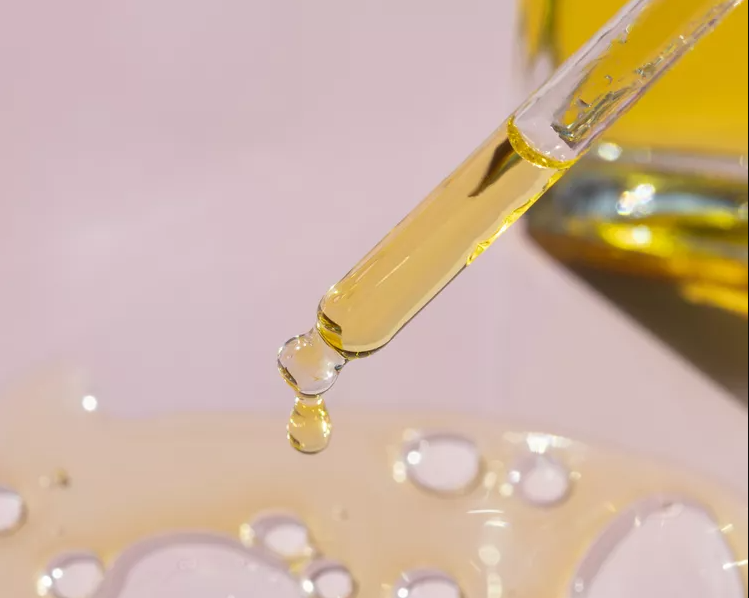Pores: We’ve all got these tiny openings in our skin for releasing sweat and oil, but for some people, they can be more temperamental than others. Or, rather, clogged pores happen more often to some of us than others. Clogged pores happen when oil doesn’t or can’t flow through them as it should, explains board-certified dermatologist Geeta Yadav, MD. “Typically, this is caused by the overproduction of oil that then becomes trapped by dead cells that haven’t properly shed from the lining of the pore. Makeup, dirt, and/or comedogenic ingredients can also block the pore, and prevent that flow of oil through it,” she says.

Comedogenic is essentially a word for pore-clogging, and while these types of ingredients aren’t the sole cause of acne and breakouts—there are several factors—they certainly won’t help the situation. “Pore-clogging ingredients make it much more likely that pimples will form,” says board-certified dermatologist Rachel Nazarian, MD. “In someone who has naturally oily skin or who harbors the bacteria that causes acne, using these ingredients is like adding gas to the fire. It’s a dangerous combination that can exacerbate acne and cause consistent breakouts.”
So what exactly makes an ingredient likely to clog your pores? Long answer short: We don’t really know for sure. “Comedogenicity isn’t entirely understood,” Yadav says. “In some cases, ingredients can interact poorly with your sebum, making it thicker, while other ingredients are too thick for sebum to pass through.” To that point, pore-clogging ingredients are typically occlusive, adds board-certified dermatologist Melanie Palm, MD. They sit on top of the skin, forming a seal that ends up trapping oil, particularly when someone has oily skin to start. Palm also points out that some pore-clogging ingredients add more oils to the skin, causing cells to stick together and adhere more tightly instead of sloughing off as they typically should from the lining of the pore.
Now that you understand why comedogenic ingredients can increase your breakouts, it’s time to learn which ones specifically to consider avoiding. Ahead, read all about seven pore-clogging ingredients dermatologists say are worth steering clear of if you’re prone to acne.
Coconut Oil
All three dermatologists we spoke with called out coconut oil as a common offender. “While it has a variety of health benefits, it’s highly comedogenic, especially when applied on the the face,” Palm explains. “Because it isn’t easily absorbed [into] the skin, it can trap bacteria and dead skin cells, making it detrimental for those who are acne-prone.”
Petroleum Jelly
Commonly known as Vaseline and used in the viral TikTok slugging trend, petroleum jelly is one ingredient you’ll definitely want to skip if you’re always battling breakouts. It’s very thick, sitting on the surface of the skin and can cause a “traffic jam” in the pore, leading to oil and dead cell buildup that can ultimately turn into a pimple, Yadav cautions.
Cocoa Butter
As a general rule of thumb, ingredients with high concentrations of oleic acid, a fatty acid, tend to be more comedogenic, Yadav tells us. This is why cocoa butter can cause issues, as it’s very high in oleic acid, she explains. Top tip: If you’re looking for an alternative that’s just as moisturizing but won’t clog pores, Palm recommends shea butter, which is non-comedogenic.
Silicone
More often found in makeup than skincare—specifically in primers—as well as haircare like conditioners and masks, silicone is highly comedogenic, according to Palm. In checking for it on the ingredient label, make sure you’re also looking for and steering clear of its derivatives, including cyclomethicone and dimethicone.
Lanolin
“This is yet another occlusive ingredient that creates a film over the dermal layer, trapping dead skin cells, bacteria, and oil within the pores, which can worsen acne and breakouts,” Palm explains. Nazarian also cites it as one of the more common pore-clogging ingredients out there.
Flaxseed Oil
A high concentration of oleic acid is also to blame for this oil’s comedogenicity. Yadav says grapeseed oil is a good alternative, equally nourishing for the skin but without the potential pore-clogging pitfall.
Marula Oil
“This ranks about a three or four on the comedogenicity scale, meaning it’s not suitable for those with acne-prone skin,” Palm explains. Swap it for squalane instead. “Typically derived from olives, it’s intensely nourishing to the skin and is biomimetic, meaning it behaves similarly to your skin’s natural oils and won’t congest the pore,” Yadav says, adding that it’s also a good substitute for coconut oil.




















